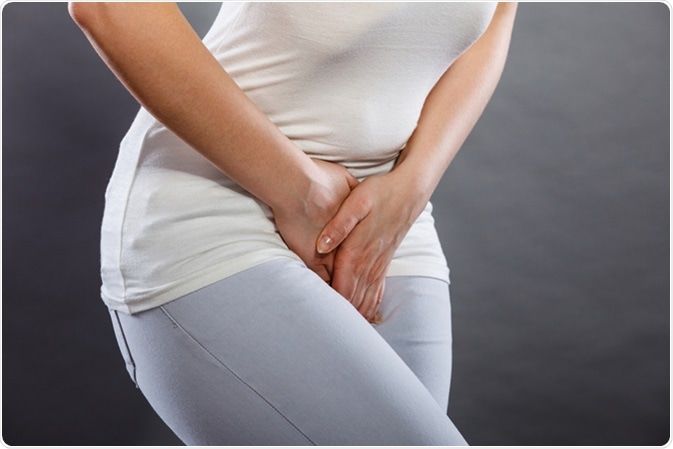For All The Latest Medical News, Health News, Research News, COVID-19 News, Dengue News, Glaucoma News, Diabetes News, Herb News, Phytochemical News, Cardiology News, Epigenetic News, Cancer News, Doctor News, Hospital News
Painful bladder syndrome or interstitial cystitis (IC), a chronic, life-long medical condition, creates urinary symptoms that are painful. The intensity of the pain varies across individuals; some individuals may feel less discomfort in the pelvic region, while others may experience chronic bladder pain or the urge to urinate suddenly or frequently.
Though the exact cause of the syndrome is not known, studies reveal that medical conditions causing inflammation in other parts of the body can be a potential cause for the syndrome. The quality of life is affected as the need to urinate often can make it necessary for individuals to stay at home and unable to exercise. Sexual relationships may suffer due to the painful symptoms.

Analysis of urine, urine culture test, and cystoscopy are used for diagnosing the syndrome.
There is no common treatment that is applicable to all patients. Physicians provide treatment on a case-by-case basis depending on the symptoms exhibited by the patients.
Treatment may include any one or a combination of the following:
Physicians use a symptom scale filled by patients and customize treatments according to symptoms present in each of the patients. Physicians try several treatment procedures before finding out the treatment that is most effective for a particular patient.
Sometimes symptoms disappear after the treatment or with a simple change in eating habits or even without any specific reason. However, chances are that the symptoms will occur again after several days or even after many years. The reason for relapse is not yet known. However, as time passes by, patients and physicians can find out a treatment plan that provides relief and helps the patient to cope with the syndrome.
Physicians may prescribe over-the-counter medications to alleviate mild pain in the bladder. For intense pain, narcotic analgesics are recommended. Discussing with physicians or pain specialists other ways to manage pain will help, because long-term use of pain killers is not advisable.
For alleviating bladder wall irritations, bladder instillation is performed. Physicians insert a catheter (a small tube) into the bladder and inject liquid form of the medicine in small quantities. The liquid medicine, composed of dimethyl sulfoxide, is slowly administered and patients are advised to hold the medicine for 15 minutes in their bladder. This treatment can be performed on a weekly basis or every alternate week for about a month or two. Positive results can be experienced after the third or fourth sitting.
For temporary relief from bladder pain, physicians may perform hydro-distention or bladder stretching procedure. Physicians fill up the bladder with fluids so that the bladder is stretched. Anesthesia given to the patients helps them to tolerate the pain throughout the stretching process. At times, pain symptoms begin to worsen after 4–48 h of treatment. However, this is a temporary phase and pain levels may reduce in about 2–4 weeks after the treatment or there could even be a relapse.
Physicians may suggest a bladder surgery for an individual who does not respond to other treatments. Though the surgical method does not always alleviate pain, it is done for bladder enlargement or for removing the bladder.
In the bladder augmentation (enlargement) procedure, the bladder sections that are inflamed and scarred are removed while allowing the bladder base to remain. Physicians remove a piece of the colon and reshape it before attaching it to the base of the bladder. Upon healing, the urination frequency will be reduced.
However, there are some side effects associated with the surgery, which include small bowel obstruction or infections in the bladder or kidney. Some individuals continue to have pain or the increased urination frequency or urge to urinate persists longer than usual. Since the colon becomes short after the surgery, the ability of the colon to absorb nutrients gets reduced. Moreover, some patients may find it difficult to urinate or hold urine.
In rare cases, physicians recommend surgery for removing the bladder—cystectomy. The surgery cannot be reversed and has a greater impact on the lifestyle of the patient. Urinary diversion surgery is performed to pass urine out of the body. Urine is collected either in a bag that is placed outside the body or in a pouch prepared inside the abdomen using a small piece of colon or small intestine. Patients need to maintain good personal hygiene to prevent any infection.
Even though studies have not shown a consistent relationship between specific diet and the syndrome, some individuals have reported that certain drinks or foods have a negative effect on the symptoms. The list includes tomatoes, chocolates, alcohol, spices, high-acid foods, citrus and other caffeinated beverages, and artificial sweeteners. Making note of foods or drinks that trigger symptoms and avoiding them is a useful technique. Though this technique requires some time and effort, the notes will surely help to associate the diet with symptoms.